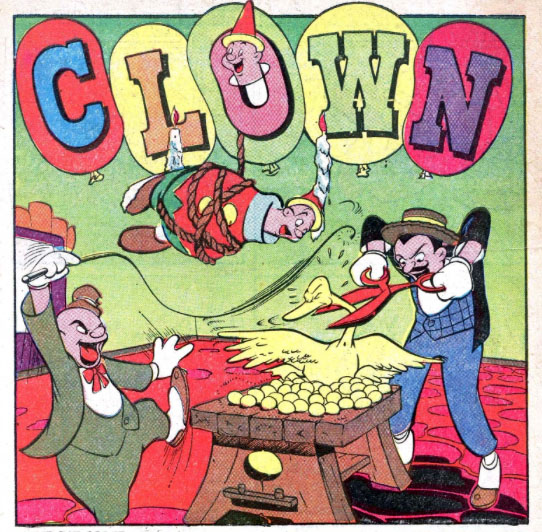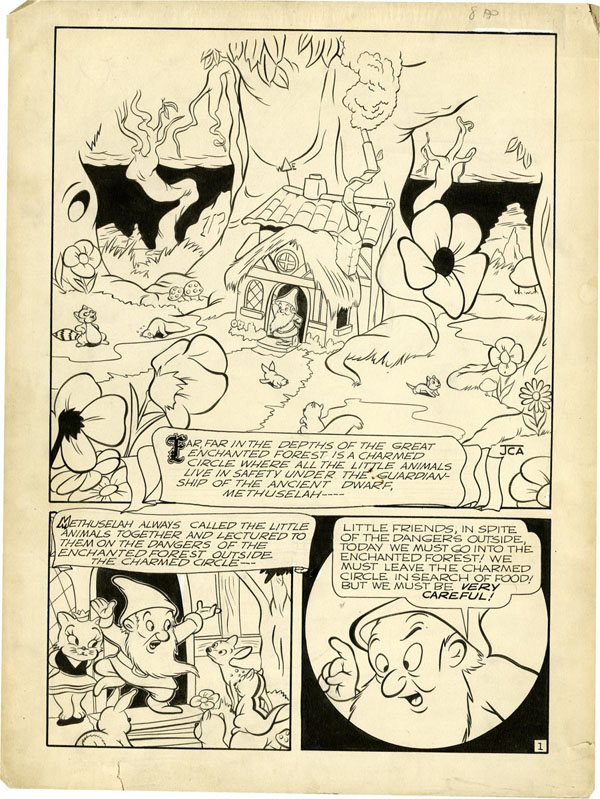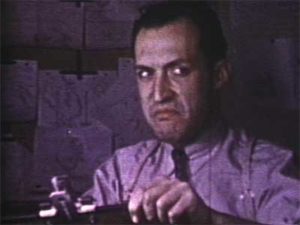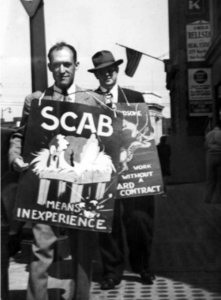
This week’s moonlighting animation artist in comics is Terrytoons/Famous Studios animator Larry Silverman!
Born in 1908 in New York, Larry Silverman’s animation career began once he graduated high school, which led to brief stints. He started at Carpenter-Goldman Laboratories as a cel washer, but only for three days. Silverman also worked at Associated Animators, where he recalled working on a Mutt and Jeff cartoon with Burt Gillett. Later, he became an assistant to John Terry, who sub-contracted Krazy Kat cartoons from Bill Nolan between 1925 and 1927. By 1930, he went over to John’s brother Paul Terry’s studio as a cel painter and assistant animator to Frank Moser. He moved to the West Coast to Walt Disney’s studio as one of Norm Ferguson’s assistant animators.
Silverman left after what he recalled as “a run-in with Walt,” around 1931, and migrated to Harman-Ising where he became a full animator. He went back to New York when Hugh Harman and Rudy Ising separated their connection with producer Leon Schelesinger and served as an animator for Van Beuren. When Van Beuren’s studio closed in 1936, Silverman returned to Paul Terry’s studio, where he animated throughout the late 1930s and 1940s. Different examples of his work for Terry exude a softness in the character animation; he animates the first scenes of a Frank Sinatra-esque cat crooning onstage in Swooning the Swooners (1945) and the introduction of Svengali in Svengali’s Cat (1946).
In 1947, when many artists at Terry’s studio went on strike over pay disputes and layoffs, Silverman joined them on the picket line and didn’t return to work. He followed the strikers that left the studio to work in different companies that produced animated television commercials, namely Film Graphics. Silverman moved over to Famous Studios as an animator in Myron Waldman’s unit, working on several cartoons featuring Casper the Friendly Ghost.
In the mid-1950s, he left Famous Studios and went back to work at Terrytoons, after CBS bought the studio under Gene Deitch’s management. He also went into television animation, working on The Deputy Dawg Show. Ralph Bakshi, who worked with Silverman during this period, spoke of him: “Larry was one of the great old timers, very sure of what he was doing, very friendly and helpful, very quiet.” By the early 1960s, Silverman left Terrytoons and worked on for television animation, as well as theatricals for Paramount. He served as an animator on King Features Syndicate’s Popeye and Snuffy Smith series, in addition to the regular shorts produced by Famous Studios.
Silverman went back to the West Coast in the mid-‘60s to work at Hanna-Barbera as an animator on such shows as The Flintstones, Secret Squirrel and The Peter Potamus Show. By the end of the 1960s, he moved to Filmation, where he spent the remainder of his career in animation before his retirement in 1984. Tom Minton, who worked at Filmation with Silverman, shared about his technique: “His animated scenes tended to have a rather utilitarian look…He tended to animate on one’s but expose his stuff on two’s, so it had a smooth but somewhat slow quality.” It is uncertain if he used this approach in his earlier work, but judging from the examples of his work for Paul Terry in the 1940s, it might be possible. Silverman passed away in 1995, at the age of 86.

Comic book story drawn by Silverman, from an unknown comic book magazine.
Here is a selection of Silverman’s comic book work, which mostly relied on fantasy realms. Many of the stories are under his association with Jason Comic Art (JCA), run by Leon Jason, around 1946-47. Also included is a featured Four Color story, supposedly drawn by Silverman, based on the Tales of the Wizard of Oz series produced by Crawley Films for Videocrafts (later known as Rankin/Bass Productions), which aired in 1961.
 • “Benny the Burglar”—Tick Tock Tales #2 (Februrary 1946)
• “Benny the Burglar”—Tick Tock Tales #2 (Februrary 1946)
• “Judy and the Magic Chalk”—Tick Tock Tales #3 (March 1946)
• “Tricksy Pixies”—Tick Tock Tales #5 (May 1946)
• “Dopsy Durvy”—Frisky Fables #8 (August 1946)
• “Jumpin’ Jack”—Nutty Comics #5 (Fall 1946)
• “Happy Clown”—Clown Comics #3 (Winter 1946)
• “Dandy”—Dandy Comics #1 (Spring 1947)
• “Tales of the Wizard of Oz”—Four Color #1308 (March-May 1962)

(Thanks to Milton Knight, Charlie Judkins and Harvey Deneroff for their help.)




 DEVON BAXTER is a film restoration artist, video editor, and animation researcher/writer currently residing in Pennsylvania. He also hosts a
DEVON BAXTER is a film restoration artist, video editor, and animation researcher/writer currently residing in Pennsylvania. He also hosts a 



















































































If only the Tales of the Wizard of Oz series was as trippy and psychedelic as that one-shot. It’s like reading a kiddie-friendly “underground/alternative” comic. Good stuff.
I’ve long been curious about that “Tales of the Wizard of Oz” comic and am glad to finally have a name to attach to it. The story is overflowing with occult references. We have Trees of Sephirot made from rutabagas, lists of fallen angels (the Watchers from the Book of Enoch), accidentally-conjured dangerous elementals (in the form of Munchkins!), and esoteric occult symbols every which way you turn. Some aspects of the comic’s cosmology bear a resemblance to Zoroastrianism and/or Alexander Crowley’s Thelema. The core of the whole thing is clearly ceremonial magic (and the three headed snake is possibly Azhi Dahaka, present throughout the story as an aide to whoever happens to be doing the conjuring) but what on earth is going on here? And how did this Rankin-Bass TV tie-in kid’s comic book become a platform for someone’s (Silverman’s?) occult interests? And what school of occult belief *is* this? There must be a story behind this, and an interesting one.
Born: February 28, 1908
Died: January 30, 1995
Good post. What exactly led to the identification of those comic stories in particular as being drawn by Silverman? I haven’t any work signed by him or personal records used for confirmation. I’m trying to get more familiar with his style, so it would be nice to know.